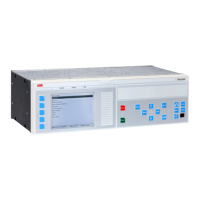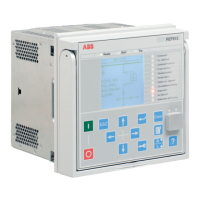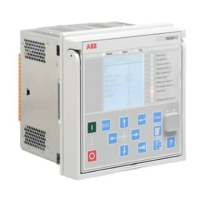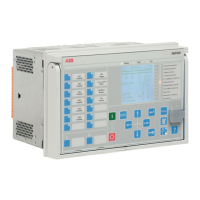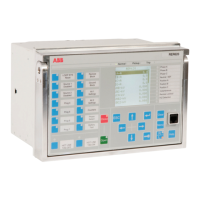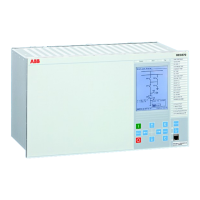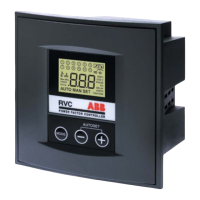Section 4 1MAC309294-MB F
Protection functions
214 RER620
Technical Manual
Timer
Once activated, the timer activates the PICKUP output. The time characteristic is
according to DT. When the operation timer has reached the value set by Operate delay
time, the OPERATE output is activated if the overvoltage condition persists. If the negative
sequence voltage normalizes before the module operates, the reset timer is activated. If the
reset timer reaches the value set by Reset delay time, the operate timer resets and the
PICKUP output is deactivated.
The timer calculates the pickup duration (PICKUP_DUR) value which indicates the ratio
of the pickup situation and the set trip time. The value is available through the Monitored
data view.
Blocking logic
There are three operation modes in the blocking functionality. The operation modes are
controlled by the BLOCK input and the global setting “Configuration/System/Blocking
mode” which selects the blocking mode. The BLOCK input can be controlled by a binary
input, a horizontal communication input or an internal signal of the relay program. The
influence of the BLOCK signal activation is preselected with the global setting Blocking
mode.
The Blocking mode setting has three blocking methods. In the “Freeze timers” mode, the
trip timer is frozen to the prevailing value. In the “Block all” mode, the whole function is
blocked and the timers are reset. the “Block TRIP output” mode, the function operates
normally but the TRIP output is not activated.
4.3.5.5 Application
A continuous or temporary voltage unbalance can appear in the network for various
reasons. The voltage unbalance mainly occurs due to broken conductors or asymmetrical
loads and is characterized by the appearance of a negative-sequence component of the
voltage. In rotating machines, the voltage unbalance results in a current unbalance, which
heats the rotors of the machines. The rotating machines, therefore, do not tolerate a
continuous negative-sequence voltage higher than typically 1-2 percent x V
n
.
The negative-sequence component current I
2
, drawn by an asynchronous or a synchronous
machine, is linearly proportional to the negative-sequence component voltage V
2
. When
V
2
is P% of V
n
, I
2
is typically about 5 x P% x I
n
.
The negative-sequence overcurrent 46 blocks are used to accomplish a selective protection
against the voltage and current unbalance for each machine separately. Alternatively, the
protection can be implemented with the 47 function, monitoring the voltage unbalance of
the busbar.
If the machines have an unbalance protection of their own, the 47 operation can be applied
as a backup protection or it can be used as an alarm. The latter can be applied when it is
not required to trip loads tolerating voltage unbalance better than the rotating machines.
If there is a considerable degree of voltage unbalance in the network, the rotating machines
should not be connected to the network at all. This logic can be implemented by inhibiting
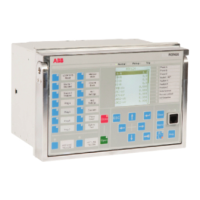
